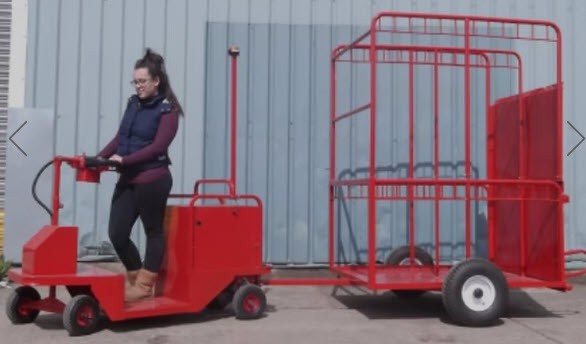SEO is all about making your website more visible and attractive to search engines like Google, Bing, or Yahoo. When people search for something online, they usually type in keywords or phrases related to what they’re looking for. The search engine then scours the internet to find the most relevant websites to display in the search results. Lets see if we can make SEO simplified.
Now, here’s where SEO comes into play. The goal of SEO is to improve your website’s ranking in those search results, ideally getting it to appear on the first page ( #1 is the optimum position). Why? Because research shows that the vast majority of people never look beyond the first page of search results. So, if your website isn’t there, it’s missing out on a lot of potential visitors.
The process of SEO involves several key principles and techniques. One of the most important is optimising your website’s content. This means creating high-quality, relevant content that incorporates the keywords and phrases people are likely to search for. But it’s not just about stuffing those keywords into your content as much as possible. Search engines are smart enough to recognise when content is overly optimised, and they may penalise your site for it. Instead, you need to strike the right balance, ensuring that your content is natural and engaging while still being optimised for search.
Another important aspect of SEO is making sure your website is technically sound. This includes things like ensuring fast loading times, optimising images, and making sure your site is mobile-friendly. Search engines prioritise websites that offer a good user experience, so addressing technical issues is crucial for improving your SEO.
In addition to on-page optimisation, SEO also involves off-page techniques. This includes things like building high-quality backlinks to your site from other reputable websites. Backlinks serve as a vote of confidence in the eyes of search engines, indicating that your site is trustworthy and authoritative.
It’s also important to regularly monitor and analyse your website’s performance. This involves tracking things like your search engine rankings, organic traffic, and conversion rates. By closely monitoring these metrics, you can identify areas for improvement and adjust your SEO strategy accordingly.
Overall, SEO is a multifaceted process that requires a combination of technical know-how, creativity, and strategic thinking. While it can seem daunting at first, understanding the basic principles and techniques can go a long way toward improving your website’s visibility and attracting more visitors.
Search engine optimisation (SEO) is the process of optimising a website to improve its ranking in search engine results pages (SERPs). By making certain changes to the design and content of a website, businesses can increase their visibility and drive more traffic to their site. In this article “SEO Simplified” we will aim to demystify and get rid of some of the SEO misinformation.
SEO can seem complex and overwhelming, but it can be broken down into simple principles that anyone can understand. In this article, we will explain the basics of SEO and how it can be used to improve your website’s performance.
We will cover topics such as keyword research, on-page optimisation, and link building, and provide practical tips for getting started with SEO. Whether you’re an SME business with an existing site or looking to build a new website, this article will give you a solid foundation in SEO and help you improve your website’s visibility in search engines.
What is SEO
SEO improves a website so that it performs better in the search engine results (meaning being on page one).
The benefit of this is to generate more traffic to the website. The goal is ultimately to make more revenue for the company by capturing and converting leads coming from the search results.”
Good SEO practices help search engines (like Google) because they want to rank only the best websites on page one of the search results. So in simplest terms if you have a website that is helpful to search engines and people, you have a better chance to rank.
So how does more traffic to the website equate to more revenue
Once someone gets to your website from the search results, they can do things like:
- Sign up for an email list
- Download content
- View a video
- Request a service quote
- Buy a service or product
- Subscribe to a service
While some of those actions require some nurturing to get a sale, the end goal is the sale.
SEO’s main goal is to drive traffic to the website, then the website and the company is responsible for converting those leads.
SEO Aligns with Key Business Initiatives
Consider the following business scenarios
- looking at additional revenue streams,
- wanting to cut costs in marketing,
- needing to differentiate the company from the competition
- redesigning the outdated website.
You could show them:
- SEO can increase visibility for your business online when launching new products or services.
- SEO can ultimately decrease the cost of marketing if you can get rid of some of your PPC / advertising costs.
- You can use the right SEO content to differentiate your company from the rest.
- SEO should be a part of any website redesign so that it does not inadvertently hinder organic search traffic.
At the very minimum, SEO can reach your target audience in new ways.
Keyword Research
Keyword research is the process of discovering the words and phrases that people use to search for information on a particular topic. It is an important step in search engine optimisation (SEO) as it helps identify the keywords that are most relevant to a website or business, and can help to inform the creation of website content, blog posts, and other online materials.
Keyword research can also be used to identify potential keywords for paid search advertising campaigns.
Without this critical step in knowing what your audience wants, your website may never have a chance to be found.
The 5 main benefits of completing keyword research
- Identifying the right keywords: Keyword research helps you identify the keywords and phrases that people are using to search for products, services or information related to your business. This allows you to optimise your website and content for those keywords, which can increase your visibility in search engine results pages (SERPs).
- Understanding your audience: By researching keywords, you can gain insights into the interests and needs of your target audience. This can help you create more relevant and effective content that resonates with your audience and encourages them to engage with your brand.
- Improving your SEO: By targeting the right keywords, you can improve your website’s visibility and search rankings. When your website is optimized for relevant keywords, search engines are more likely to show it to people searching for those keywords, which can lead to more traffic and better visibility for your brand.
- Optimizing for paid search: Keyword research can also help you identify keywords that are relevant to your business and that you can bid on in paid search advertising campaigns, such as Google Ads. By targeting the right keywords, you can reach potential customers who are actively searching for what you have to offer.
- Competitive analysis: Researching keywords can also give you an idea of your competition and what keywords they are targeting. This can help you identify gaps in the market and opportunities to differentiate your business.
Seventy-one percent use search engines as the starting point for discovery. Seventy-four percent use search engines for consideration/purchase.
How to go about conducting keyword research
- Start with a list of seed keywords: Begin by creating a list of keywords and phrases that are relevant to your business or industry. These seed keywords can come from a variety of sources, such as your products or services, your competitors, or your own brainstorming.
- Use keyword research tools: There are several keyword research tools available, such as Google Keyword Planner, Ahrefs, SEMrush, and Keywords Everywhere, that can help you expand your list of seed keywords and provide data on their search volume, competition, and other metrics.
- Analyse search volume and competition: Once you have a list of keywords, you can use keyword research tools to analyse the search volume and competition for each keyword. This can help you identify keywords that have high search volume but low competition, as these may be more likely to drive traffic to your website.
- Look for long-tail keywords: Long-tail keywords are longer, more specific phrases that are often less competitive and can be easier to rank for. You can use keyword research tools to find long-tail keywords that are relevant to your business.
- Check out the SERP: Take a look at the search engine results pages (SERP) for the keywords you’re researching. This will give you an idea of the types of websites and content that are currently ranking for those keywords, and can inform your content strategy.
- Analyse your competitors: Look at your competitors and see what keywords they are targeting, this will give you an idea of what keywords are important in your industry.
- Prioritise keywords: After analysing the data, you can prioritize your list of keywords and phrases, focusing on those that have the best combination of search volume, relevance, and competition.
- Incorporate keywords into your website and content: Finally, use the keywords you’ve identified in your website’s meta tags, page titles, URLs, and throughout your content. This will help search engines understand what your site is about, and make it more likely to rank for those keywords.
Keywords are the search queries that your target audience uses in search engines to find what they are looking for. You need to know what those search queries are so that you can create content for your website around them
On Page Optimisation
On-page optimisation refers to the techniques used to optimise individual web pages in order to rank higher and earn more relevant traffic in search engines. This includes optimising the content, meta tags, images, and other elements of the web page. Additionally, it may include optimising the website’s internal linking structure and URLs to make it more search engine friendly.
There are several steps you can take to perform on-page optimisation:
- Conduct keyword research: Identify the keywords and phrases that are relevant to your business and the content on your website.
- Optimise your title tags and meta descriptions: These are HTML tags that provide information about your website to search engines. Make sure they accurately reflect the content on the page and include your target keywords.
- Create high-quality, relevant content: Your content should be informative and useful to your target audience. It should also include your target keywords in a natural and appropriate manner.
- Optimise images and videos: Use descriptive, keyword-rich file names and alt tags for all images and videos on your website.
- Optimise internal linking: Make sure your website’s internal linking structure is logical and easy for both users and search engines to navigate.
- Optimise URLs: Use clean, simple, and descriptive URLs that include your target keywords.
- Optimize for mobile: Your website should be mobile-friendly and responsive to ensure that it can be easily accessed and navigated on all devices.
- Optimise website loading speed: Website loading speed is important for both users and search engines. Use tools like Google PageSpeed Insights to identify areas that need improvement and optimize accordingly.
- Use structured data: Use Schema mark-up to help search engines understand the content on your website, including what type of content it is, who wrote it and when it was created.
- Monitor and track your results: Use tools such as Google Analytics to track your website’s traffic, conversion rates, and other key metrics to measure the effectiveness of your on-page optimisation efforts.
3 key benefits of on page optimisation
- Improved search engine rankings: Proper on-page optimisation can help improve your website’s visibility in search engine results pages (SERPs), which in turn can lead to more traffic and higher conversion rates.
- Increased user engagement: On-page optimisation can also improve the user experience of your website, making it easier for visitors to navigate and find the information they’re looking for. This can increase the amount of time users spend on your site, lower bounce rates and improve engagement.
- Better returns on investment: By improving your website’s visibility and user engagement, on-page optimisation can help increase your online sales and leads, ultimately resulting in better returns on your investment. Additionally, it can also help to better understand your audience, which in turn can help you to create more effective marketing campaigns in the future.
Link Building
Link building is the process of acquiring backlinks, which are links from other websites that point to your website. These links are considered important for SEO (Search Engine Optimization) because search engines, like Google, use them as a way to measure the quality, relevance and authority of a website. Link building is important because the more high-quality backlinks your website has, the more likely it is to rank well in search engine results pages (SERPs).
There are many ways to acquire backlinks, including:
- Content marketing: Creating high-quality, informative and engaging content that other websites want to link to.
- Guest blogging: Writing articles for other websites in your industry, and including a link back to your website in the author bio or article.
- Broken link building: Finding broken links on other websites and offering to replace them with links to your website.
- Social media marketing: Using social media to promote your website and encourage others to link to your content.
- Directory submissions: Submitting your website to online directories, such as local business directories or industry-specific directories.
- Influencer marketing: Reach out to influencers in your industry and ask them to share your content or link to your website.
It is important to note that link building is not a one-time task, it is an ongoing process, and it should be done in a natural and sustainable way. Additionally, the quality of the links is more important than the quantity. Avoid black hat techniques such as buying links or participating in link farms, these may lead to penalties from search engines.
What Sort of Results Can You Expect From SEO
There are far too many factors at play in organic search to promise any specific outcome. (Even though the decision makers may want you to.)
SEO Simplified – Organic search is a highly competitive space. Without a website that is streamlined for both search engines and website visitors, and without content that demonstrates expertise and authority, you don’t even have a chance to show up on page one.
With those things at play, however, you do. You have a chance.
If the competition is already surpassing you in the search results and reaping the rewards of traffic – the same traffic you could be available to them.
The longer you wait to get in the game, the further ahead the competition can get. That makes it even harder to pass them.
I hope the SEO Simplified article has answered some of your SEO questions. If you would like more information why not give us a call 01733 361729 we love to talk “Jargon Free”









